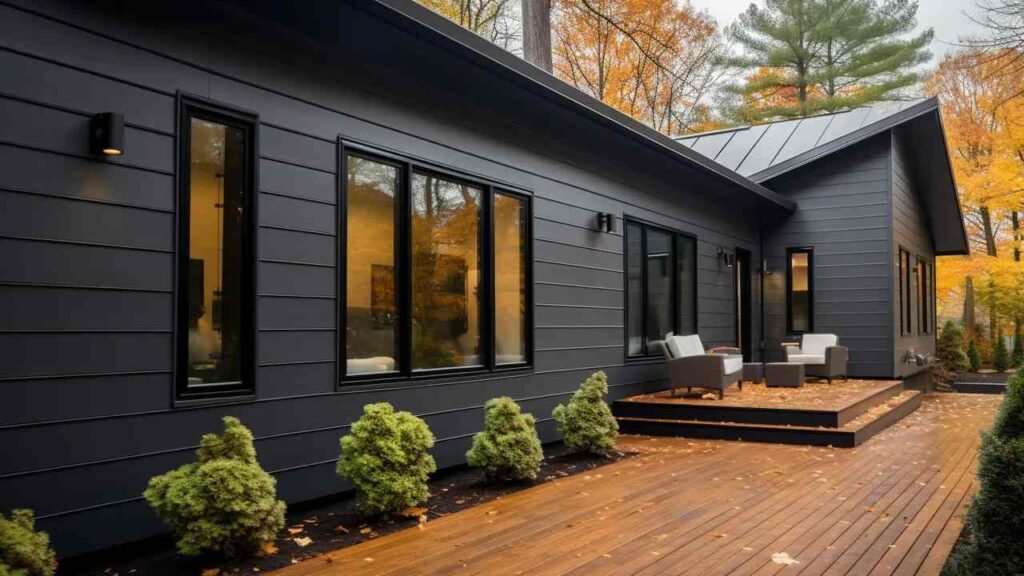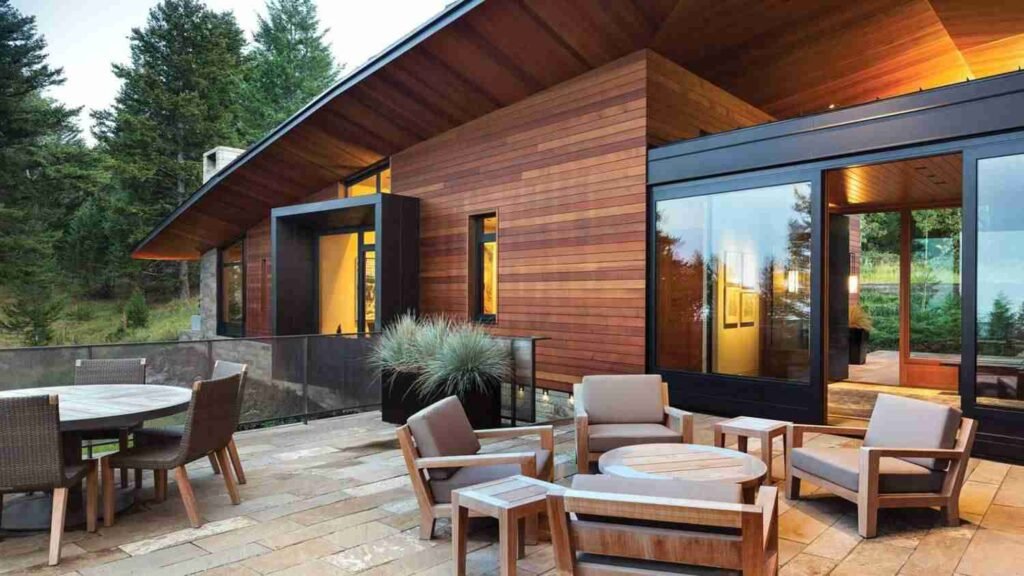Choosing between vinyl and wood siding can feel like a tough decision, but it boils down to your preferences and needs. Vinyl siding is often praised for its low maintenance and long-lasting durability, which can save you time and money in the long run. Meanwhile, wood siding provides a classic, natural aesthetic that many homeowners find appealing, though it does require more upkeep. If you’re considering a siding project, Humberto Maradiaga can offer expert advice and help you weigh the pros and cons of each option. So, Vinyl vs. Wood Siding: Which is Better for Your Home? Let’s explore the details to find the perfect fit for you.
When it comes to enhancing your home’s exterior, choosing the right siding is crucial. With numerous options available, vinyl and wood siding are two of the most popular choices. But which one is the better fit for your home? Let’s dive into the details of each to help you make an informed decision.
Vinyl Siding: A Modern Classic

Vinyl siding, known for its modern durability and low maintenance, offers a practical and stylish solution for many homeowners. When choosing the best siding material for your home, consider factors such as climate, budget, and desired aesthetics. Evaluate the durability and maintenance requirements of each option and how they align with your needs. Consulting with a professional can help you assess these factors and select the siding that will best enhance and protect your home.
1. Durability and Maintenance
Vinyl siding is celebrated for its durability. Made from PVC, it’s designed to withstand harsh weather conditions, including heavy rain, strong winds, and intense sun. Unlike wood, vinyl doesn’t crack, warp, or rot, making it an excellent choice for areas with extreme weather.
One of the most appealing aspects of vinyl siding is its low maintenance. It doesn’t need to be painted, and it can be easily cleaned with a garden hose. Over time, you won’t have to worry about peeling paint or wood decay, which translates to lower maintenance costs and less time spent on upkeep.
2. Variety and Aesthetics
Vinyl siding has come a long way in terms of aesthetics. It’s available in a wide range of colors, styles, and textures. Whether you’re looking for a traditional lap siding, a modern vertical style, or even a textured look that mimics wood grain, there’s a vinyl option to match your design preferences.
However, while vinyl can mimic the look of wood, it may lack the natural appeal that some homeowners find irresistible. If authenticity is important to you, this might be a consideration.
3. Cost and Installation
Vinyl siding tends to be more budget-friendly than wood. The material itself is less expensive, and because it’s easier to install, labor costs can be lower as well. Most vinyl siding installations are straightforward and can be completed relatively quickly.
For those on a tight budget or looking for a cost-effective siding option, vinyl is often the go-to choice. But, as with any investment, make sure to weigh the long-term benefits and potential costs of repair or replacement.
Wood Siding: Timeless Beauty

Wood siding is renowned for its timeless beauty and natural charm, offering a classic look that enhances the character of any home. Siding Options for Historic Homes in Louisville, wood siding can be a particularly fitting choice, preserving the architectural integrity while providing authentic appeal. Professional siding options tailored for historic properties ensure that the siding complements the home’s unique style and meets preservation standards, blending aesthetics with durability for a perfect finish.
1. Natural Charm and Aesthetics
Wood siding is known for its classic and timeless appearance. It adds warmth and character to a home, and its natural grain can’t be fully replicated by synthetic materials. If you’re drawn to the traditional look of wood, this might be the best choice for you.
There are several types of wood siding to choose from, including cedar, pine, and redwood. Each type has its own unique characteristics and benefits, from cedar’s natural resistance to rot and insects to pine’s affordability and ease of installation.
2. Maintenance and Longevity
One of the trade-offs with wood siding is the level of maintenance required. Wood needs to be regularly painted or stained to protect it from the elements. Without proper maintenance, wood siding can suffer from rot, warping, and insect damage. This means more frequent upkeep and potentially higher costs over time.
Despite the maintenance, many homeowners find that the beauty and durability of well-maintained wood siding outweigh the effort involved. Regular inspection and care can ensure that wood siding remains a stunning feature of your home for many years.
3. Environmental Considerations
If sustainability is important to you, wood siding has an edge over vinyl. Wood is a natural, renewable resource, and many types of wood siding are sourced from sustainably managed forests. Additionally, wood can be recycled or repurposed at the end of its life cycle, making it a more environmentally friendly option compared to vinyl.
4. Cost and Installation
Wood siding typically comes with a higher price tag than vinyl, both in terms of material and installation. The initial cost is often higher, and because installation can be more labor-intensive, this can also increase the overall expense. Moreover, the need for regular maintenance can add to the long-term costs.
However, if you’re looking for a siding material that offers unparalleled beauty and are prepared to invest in its upkeep, wood siding might be worth the extra expense.
Making the Decision: Vinyl vs. Wood Siding
When deciding between vinyl and wood siding, consider the following factors:
1. Climate and Weather
Climate and weather conditions play a crucial role in selecting the right siding for your home. Vinyl siding is ideal for harsh climates due to its durability and resistance to moisture, while wood siding may be better suited for milder conditions. For optimal performance and longevity, professional siding installation services are essential. Experts can ensure proper installation, taking into account local weather patterns and ensuring that the siding effectively protects your home from the elements.
Think about the climate in your area. If you live in a region with severe weather conditions or high humidity, vinyl’s durability and resistance to moisture may make it the better choice. In contrast, if you’re in a more temperate climate and appreciate the natural beauty of wood, you might prefer wood siding.
2. Budget and Long-Term Costs
Your budget plays a significant role in the decision. Vinyl is generally more affordable upfront and requires less maintenance, which can be a cost saver over time. Wood siding, while more expensive initially, offers timeless beauty and can be a worthwhile investment if you’re committed to its upkeep.
3. Aesthetic Preferences
Consider the look you want for your home. Vinyl siding offers a range of styles and colors but may not match the natural charm of wood. If authenticity and a classic appearance are important to you, wood siding might be the better option.
4. Environmental Impact
If sustainability is a priority, wood siding has an advantage due to its renewable nature. Vinyl, while durable, is made from non-renewable resources and may have a greater environmental impact.
Consulting a Professional: Humberto Maradiaga
When considering siding options or dealing with siding issues, consulting a professional like Humberto Maradiaga can be invaluable. Humberto offers expert advice on choosing the best siding for your home and provides top-notch siding repair services. Whether you need guidance on installation or need repairs to address damage, his expertise ensures that your siding project is handled with precision and care. Trusting a professional can help you achieve lasting results and maintain the integrity of your home’s exterior.
When making a decision about siding, consulting with a professional can be incredibly helpful. Humberto Maradiaga, a trusted expert in siding projects, can provide valuable insights and recommendations tailored to your specific needs. Whether you’re leaning towards vinyl or wood, Humberto can guide you through the selection process, ensure proper installation, and help you make the best choice for your home.
FAQs
Is it better to have wood or vinyl siding?
Choosing between wood and vinyl siding depends on your priorities. Vinyl siding is low-maintenance, durable, and cost-effective, making it a practical choice for many homeowners. Wood siding offers timeless beauty and natural charm but requires more upkeep and comes with a higher cost.
Which siding is best for homes?
The best siding for a home depends on factors like budget, maintenance preferences, and aesthetic goals. Vinyl siding is ideal for those seeking durability, low maintenance, and affordability. Wood siding, on the other hand, is best for homeowners who prioritize natural beauty and are willing to invest in regular upkeep.
What is the downside of vinyl siding?
Vinyl siding’s main downside is that it can sometimes look less authentic compared to natural materials like wood, potentially lacking in visual warmth and texture. It may also become brittle and prone to cracking in extremely cold temperatures. Additionally, while it requires less maintenance, vinyl siding can’t be easily repaired and may need to be replaced if damaged.
Why do people put vinyl siding over wood siding?
People often install vinyl siding over existing wood siding to improve durability and reduce maintenance. Vinyl provides a protective layer that helps shield the home from weather-related damage and eliminates the need for frequent painting or staining. Additionally, vinyl siding can be more cost-effective and easier to install compared to completely removing and replacing old wood siding.
What is the main problem with vinyl siding?
The main problem with vinyl siding is its tendency to become brittle and crack in extremely cold temperatures. Additionally, it can look less authentic compared to natural materials and may not offer the same level of visual appeal. Vinyl also often cannot be easily repaired if damaged, leading to potentially costly replacement needs.
Final Thoughts
Choosing between vinyl and wood siding ultimately depends on your personal preferences, budget, and long-term plans for your home. Vinyl offers durability, low maintenance, and affordability, while wood provides timeless beauty and natural charm with a higher maintenance requirement. By considering these factors and consulting with a professional like Humberto Maradiaga, you can make an informed decision that will enhance the appearance and value of your home for years to come.
